Let’s Rock the Energy Transition for a Greener Tomorrow – 5 Awesome Tips! 🌿
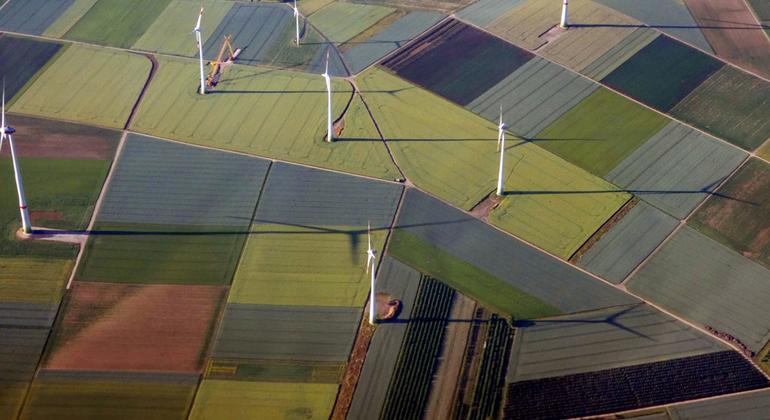 Transitioning to renewable energy is the key to securing humanity’s survival, as “without renewables, there can be no future”, according to UN Secretary-General António Guterres, ahead of the International Day of Clean Air for Blue Skies, marked on 7 September.
Transitioning to renewable energy is the key to securing humanity’s survival, as “without renewables, there can be no future”, according to UN Secretary-General António Guterres, ahead of the International Day of Clean Air for Blue Skies, marked on 7 September.
Renewable technologies like wind and solar power are, in most cases, cheaper than the fossil fuels that are driving climate change, but the world needs to prioritize the transformation of energy systems to renewable energy.
The Climate Ambition Summit, scheduled for 20 September at UN Headquarters in New York, will consider how to accelerate this transformation.
Here are five ways that acceleration could happen:

© Unsplash/Sam LaRussa
A coal power plant in Texas, USA.
1. Shift energy subsidies from fossil fuels to renewable energy
Fossil fuel subsidies are one of the biggest financial barriers hampering the world’s shift to renewable energy.
The UN Secretary-General has consistently called for an end to all international public and private funding of fossil fuels, one of the major contributors to global warming, calling any new investments in them “delusional”.
“All actors must come together to accelerate a just and equitable transition from fossil fuels to renewables, as we stop oil and gas expansion and funding and licensing for new coal, oil, and gas,” he said.
The International Monetary Fund (IMF) revealed that $5.9 trillion was spent on subsidizing the fossil fuel industry in 2020 alone. This figure includes subsidies, tax breaks, and health and environmental damages that were not priced into the initial cost of fossil fuels.
That’s roughly $11 billion a day.
Shifting subsidies from fossil fuels to renewable energy leads to a reduction in their use and also contributes to sustainable economic growth, job creation, better public health, and more equality, particularly for the poorest and most vulnerable communities around the world.
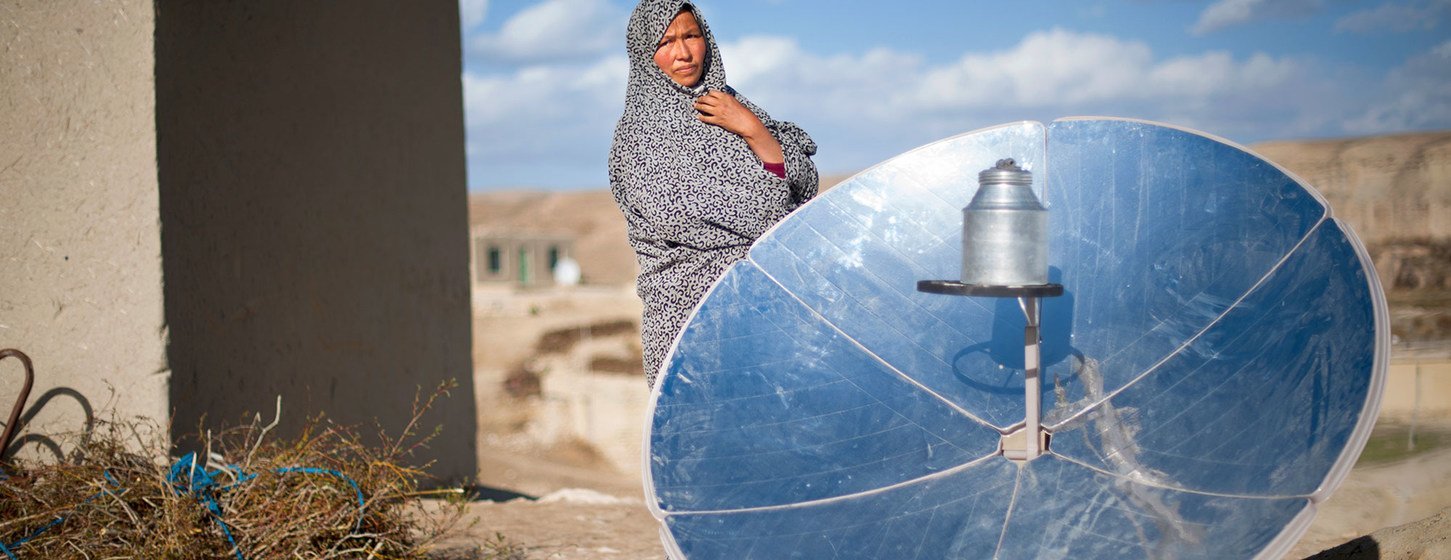
UNDP/Rob Few
A woman in Afghanistan stands next to a solar cooking disc. (file)
2. Triple investments in renewables
An estimated $4 trillion a year needs to be invested in renewable energy until 2030 in order to reach net-zero emissions by 2050. Net zero is the term which describes achieving the balance between carbon emitted into the atmosphere and the carbon removed from it.
Investment in renewables will cost significantly less compared to subsidizing fossil fuels. The reduction of pollution and climate impact alone could save the world up to $4.2 trillion per year by 2030.
The funding is there, but commitment and accountability are needed, particularly from global financial systems. This includes multilateral development banks and other financial institutions, which must align their lending portfolios towards accelerating the renewable energy transition.
“Renewables are the only path to real energy security, stable power prices and sustainable employment opportunities,” the UN chief said.
He has further urged “all governments to prepare energy transition plans” and encouraged “CEOs of all oil and gas companies to be part of the solution”.
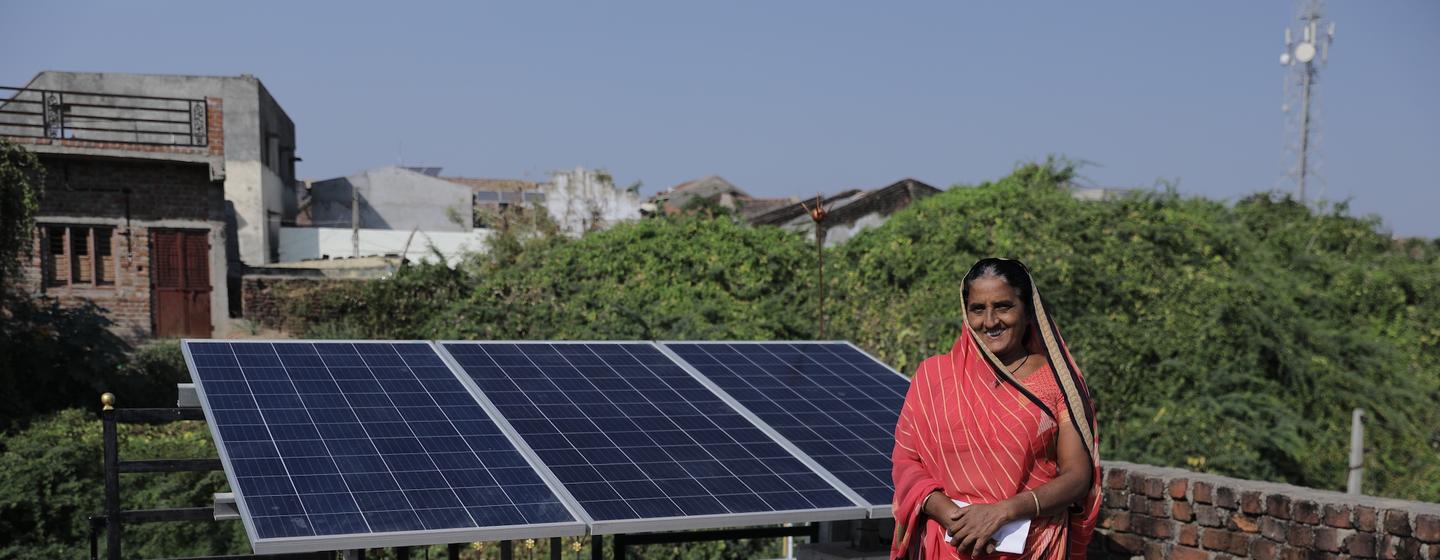
UN News
Gadvi Kailashben, 42, is a widow. She looks after her family with meagre agriculture income. The installation of solar power panels in her house by the government has given her much needed relief from the household expenses.
3. Make renewable energy technology a global public good
For renewable energy technology to be a global public good, meaning available to all and not just to the wealthy, efforts must aim to dismantle roadblocks to knowledge-sharing and the transfer of technology, including intellectual property rights barriers.
Essential technologies such as battery storage systems allow energy from renewables to be stored and released when people, communities, and businesses need power.
When paired with renewable generators, battery storage technologies can provide both reliable and cheaper electricity to isolated grids and off-grid communities in remote locations, for example, in India, Tanzania, and Vanuatu.
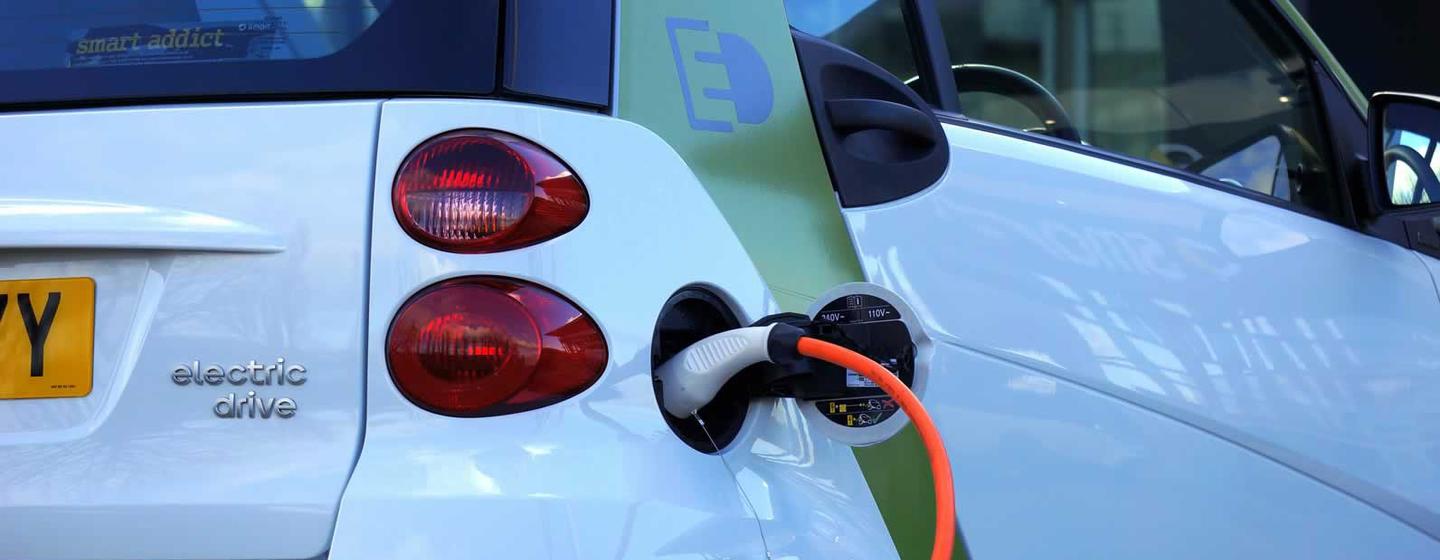
UNEP
The shift to zero-emissions vehicles is underway in many countries.
4. Improve global access to components and raw materials
A robust supply of renewable energy components and raw materials is a game changer. More widespread access to all the key components and materials is needed, from the minerals required for building wind turbines and electricity networks to elements for producing electric vehicles.
The UN’s International Seabed Authority is currently working with its Member States on how to exploit such abundant mineral resources in international waters as those crucial for manufacturing batteries while ensuring the effective protection of the marine environment from harmful effects that may arise from deep-seabed-related activities.
It will take significant international coordination to expand and diversify manufacturing capacity globally. Greater investments are needed, including in people’s skills training, research and innovation, and incentives to build supply chains through sustainable practices that protect ecosystems.
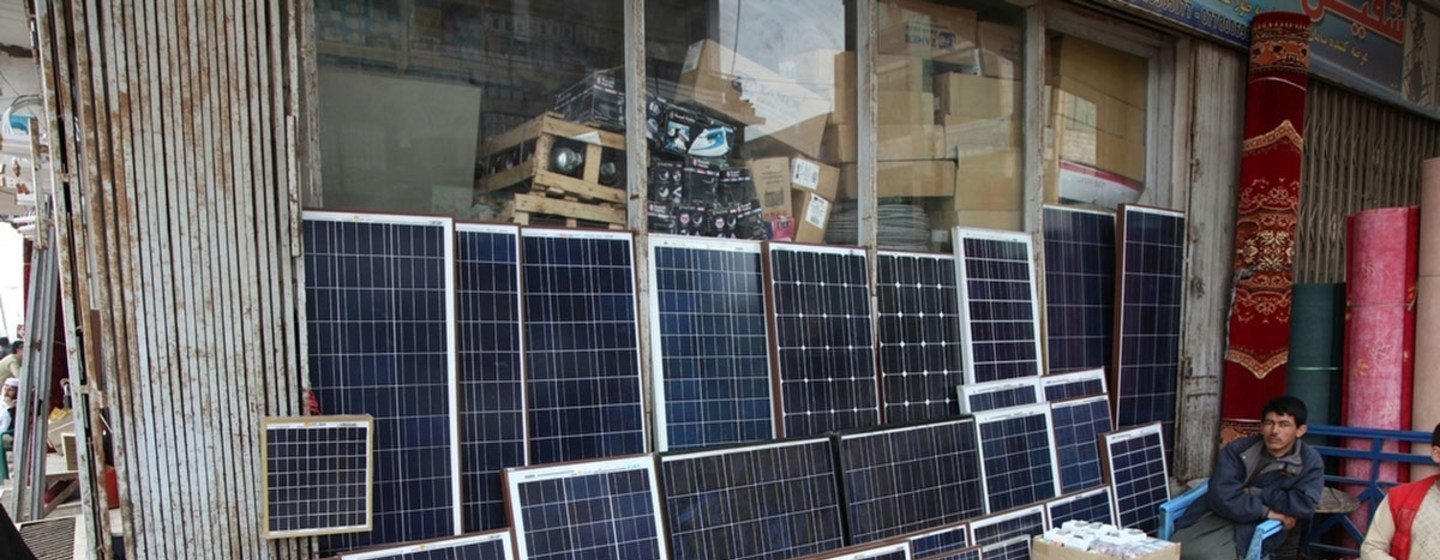
UNAMA/Sayed Barez
Solar panels are sold on the streets of Mazar-e Sharif in Afghanistan.
5. Level the playing field for renewable energy technologies
While global cooperation and coordination is critical, domestic policy frameworks must urgently be reformed to streamline and fast-track renewable energy projects and catalyse private sector investments.
Technology, capacity, and funds for renewable energy transition exist, but policies and processes must be introduced to reduce market risks to both enable and incentivise investment, while simultaneously preventing bottlenecks and red tape.
Nationally determined contributions, or countries’ individual action plans to cut emissions and adapt to climate impacts, must set renewable energy targets that align with the goal of limiting the increase in global temperatures to 1.5°C (2.7°F) above pre-industrial levels.
To achieve this, it is estimated that the share of renewables in global electricity generation must grow from 29 per cent today to 60 per cent by 2030.
Nora Chambers, an acclaimed journalist with a focus on global affairs and humanitarian issues, has dedicated over twenty years to reporting from conflict zones worldwide. Her work has spotlighted marginalized communities and highlighted urgent international concerns.




Renewable energy is the future! Transitioning to renewable technologies like wind and solar power is crucial for combating climate change and ensuring a sustainable future for all. It’s time to shift energy subsidies from fossil fuels to renewable energy sources to accelerate this much-needed transformation.
Renewable technologies like wind and solar power are indeed the way forward. It’s time to shift energy subsidies from fossil fuels to renewable energy sources to ensure a greener tomorrow for all. Let’s all work together towards a sustainable future!
Transitioning to renewable energy is crucial for a sustainable future. The shift from fossil fuel subsidies to renewable energy is essential to combat climate change and secure a greener tomorrow. Let’s prioritize the transformation to renewable energy systems to ensure a healthier planet for future generations.
Transitioning to renewable energy is crucial for our planet’s future. It’s time to shift energy subsidies from fossil fuels to renewables to accelerate the necessary transformation. The Climate Ambition Summit on September 20 needs to prioritize this shift for a greener tomorrow.
Renewable technologies like wind and solar power are definitely the way forward. It’s time to shift energy subsidies from fossil fuels to renewable energy sources. The Climate Ambition Summit should be a platform for discussing how to make this happen faster and more effectively.
In my opinion, shifting energy subsidies from fossil fuels to renewable energy is crucial for the sustainability of our planet. It’s time for all actors to prioritize the transformation to renewable energy sources for a greener tomorrow.
Could you provide more specific examples of how countries are currently shifting energy subsidies from fossil fuels to renewable energy?
Sure thing, Emily! Countries like Germany, France, and Sweden have implemented successful subsidy shifts from fossil fuels to renewables. Germany, for instance, has significantly reduced its coal subsidies while ramping up support for wind and solar projects. France has introduced tax breaks for renewable energy investments, and Sweden has allocated funds to phase out fossil fuel subsidies entirely. These examples showcase the tangible steps nations are taking towards a greener energy future.
Transitioning to renewable energy is crucial for a sustainable future. We must shift energy subsidies from fossil fuels to renewables to combat climate change effectively. It’s time for global cooperation and action to make this shift possible.
Do you have any specific examples of countries successfully shifting their energy subsidies from fossil fuels to renewable energy? It would be interesting to see practical cases of this transition in action.
Sure, Sophia_1989! One great example of a country successfully shifting energy subsidies from fossil fuels to renewable energy is Germany. Through initiatives like the Renewable Energy Act, Germany has managed to significantly reduce its reliance on fossil fuels and increase the share of renewable energy in its overall energy mix. This transition has not only helped Germany reduce its carbon emissions but has also created new job opportunities in the renewable energy sector. It’s inspiring to see practical cases of such successful transitions!
Renewable energy is the way forward for a sustainable future. It’s time to prioritize the transition to renewables and shift subsidies away from fossil fuels to accelerate this much-needed change. Let’s work together to make our planet greener!
Renewable technologies like wind and solar power are definitely the way to go! We need to shift energy subsidies from fossil fuels to renewable energy to accelerate the transition towards a greener future. It’s time for all actors to come together for a more sustainable tomorrow. #CleanEnergy #GreenFuture 🌿